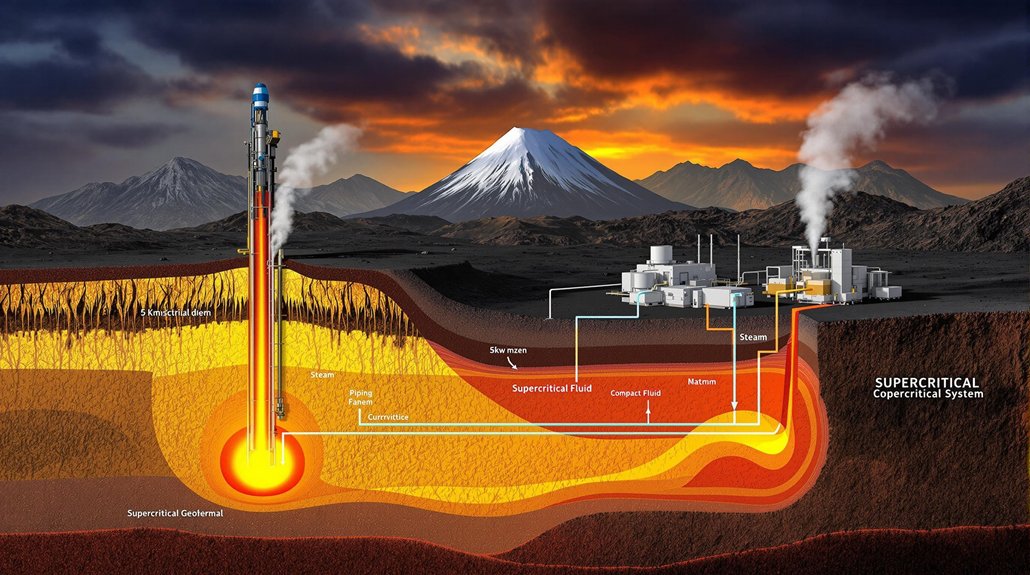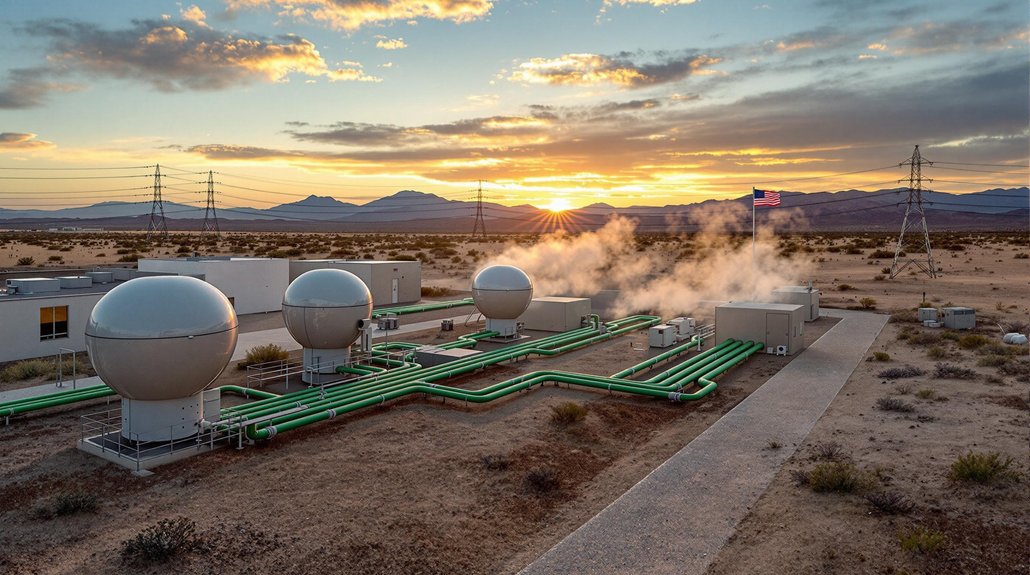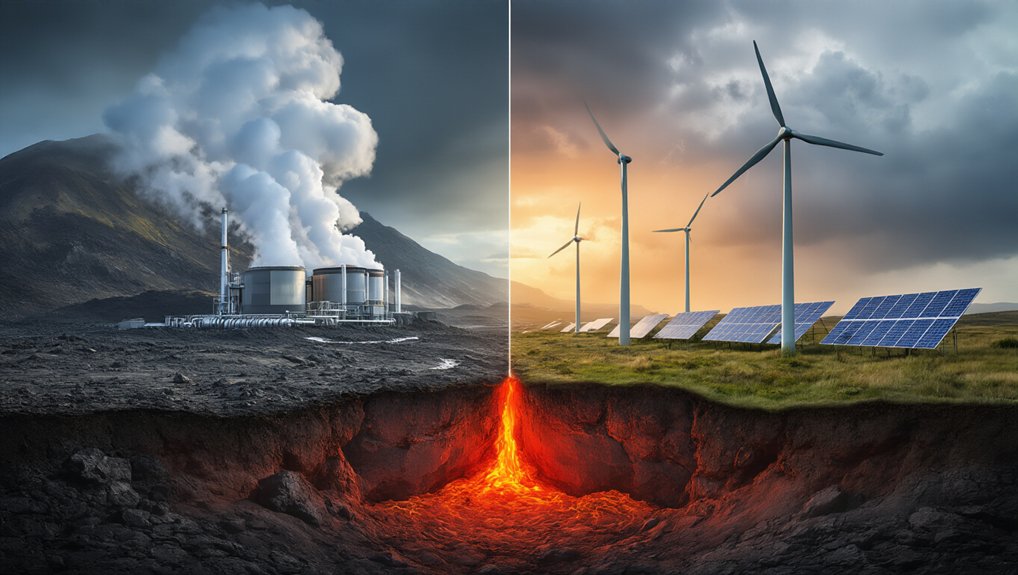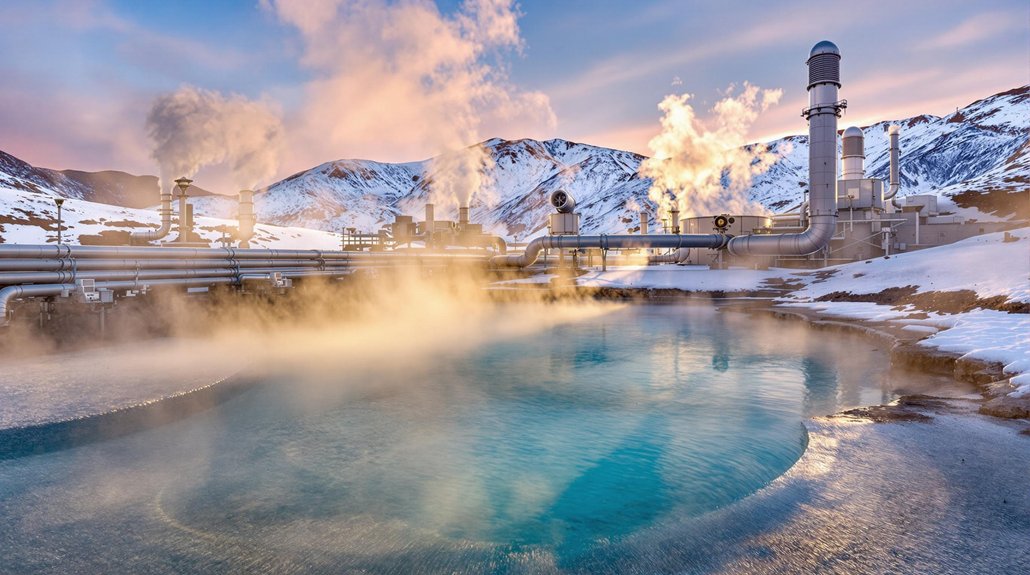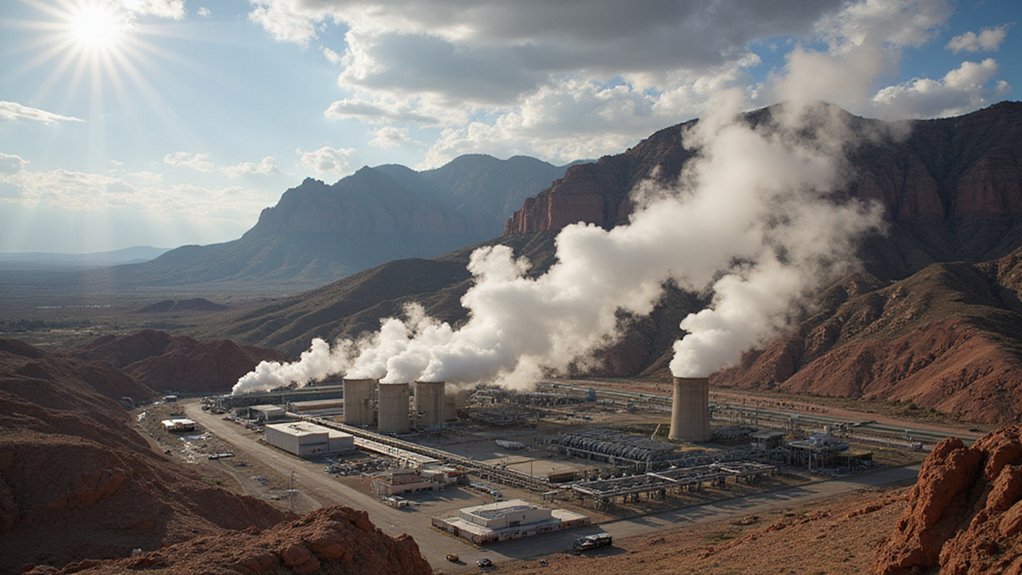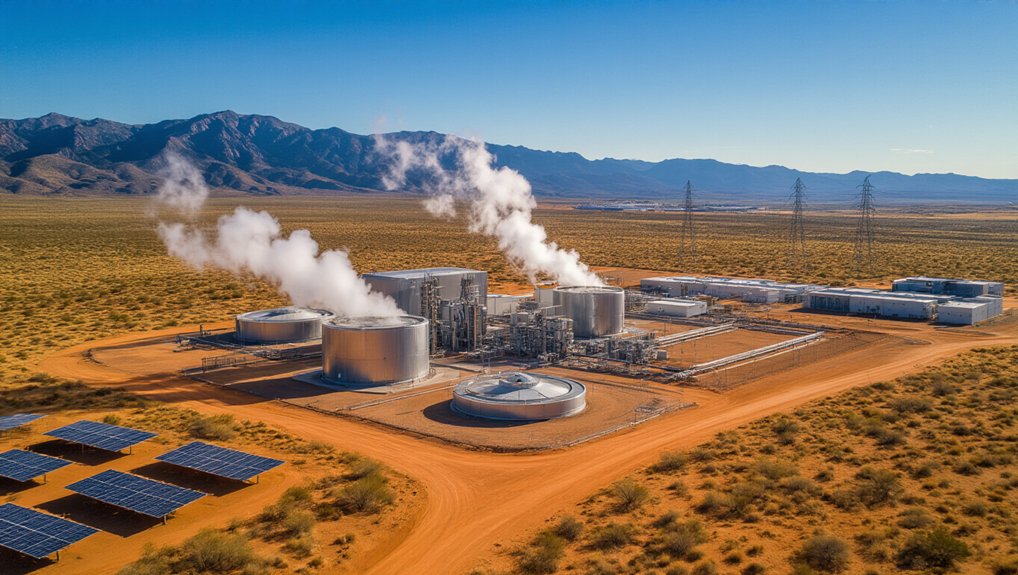Supercritical geothermal taps Earth’s intense heat at extreme depths—where water becomes supercharged at 374°C. A single well delivers 10x the power of conventional geothermal with 95% availability. Solar can’t compete with that reliability! Technical challenges? Sure. Drilling 5km deep isn’t easy, and equipment melts. But Iceland and Japan are making progress anyway. With potential for 5,000-20,000 GW globally, this underground powerhouse might just save our overheating planet.
While renewable energy sources continue to evolve, supercritical geothermal energy remains largely untapped. Deep beneath our feet lies a power source so intense it makes conventional geothermal look like a lukewarm bath. When water hits 374°C and 22.1 MPa pressure, it transforms into something magical—neither liquid nor gas, but a supercritical fluid holding up to 10 times more energy than regular water. Nature’s been doing this for millions of years in volcanic regions. We’re just late to the party.
The numbers are staggering. A single supercritical well could replace 5-10 conventional geothermal wells. Less drilling, smaller footprint, more power. It’s not rocket science. Just extremely hot, pressurized science. This isn’t your grandmother’s renewable energy—it’s baseload power that works 24/7, unlike those moody solar panels that quit at sunset. With an availability factor of 95%, geothermal energy provides unmatched reliability regardless of weather conditions.
Of course, there’s a catch. (There’s always a catch.) We need to drill 4-5 kilometers into the Earth’s crust. Equipment melts. Corrosive fluids eat through steel. The extreme conditions necessitate development of specialized corrosion-resistant materials to withstand the harsh supercritical environment. Turns out the Earth doesn’t surrender its energy without a fight.
Still, researchers aren’t backing down. Iceland, Japan, New Zealand, and Europe are all getting their hands dirty—and occasionally slightly burned—with ambitious projects. The IDDP in Iceland is particularly promising, if you consider occasional equipment destruction “promising.” These efforts target the brittle-ductile transition zone where rocks change from breakable to bendable, typically found deeper in regions with high geothermal potential.
Environmental concerns exist. Minor earthquakes, some emissions, land use issues. But compared to fossil fuels? It’s like comparing a paper cut to major surgery.
The economics initially look brutal—drilling these wells isn’t cheap. But the long-term math works out when you’re harvesting energy that could last centuries.
The global potential is mind-boggling: 5,000-20,000 GW of electrical capacity. For perspective, that could power multiple continents. Not bad for hot water, right? If we can solve the technical challenges—and that’s a big if—supercritical geothermal might just be the climate solution we’ve been sweating for.
